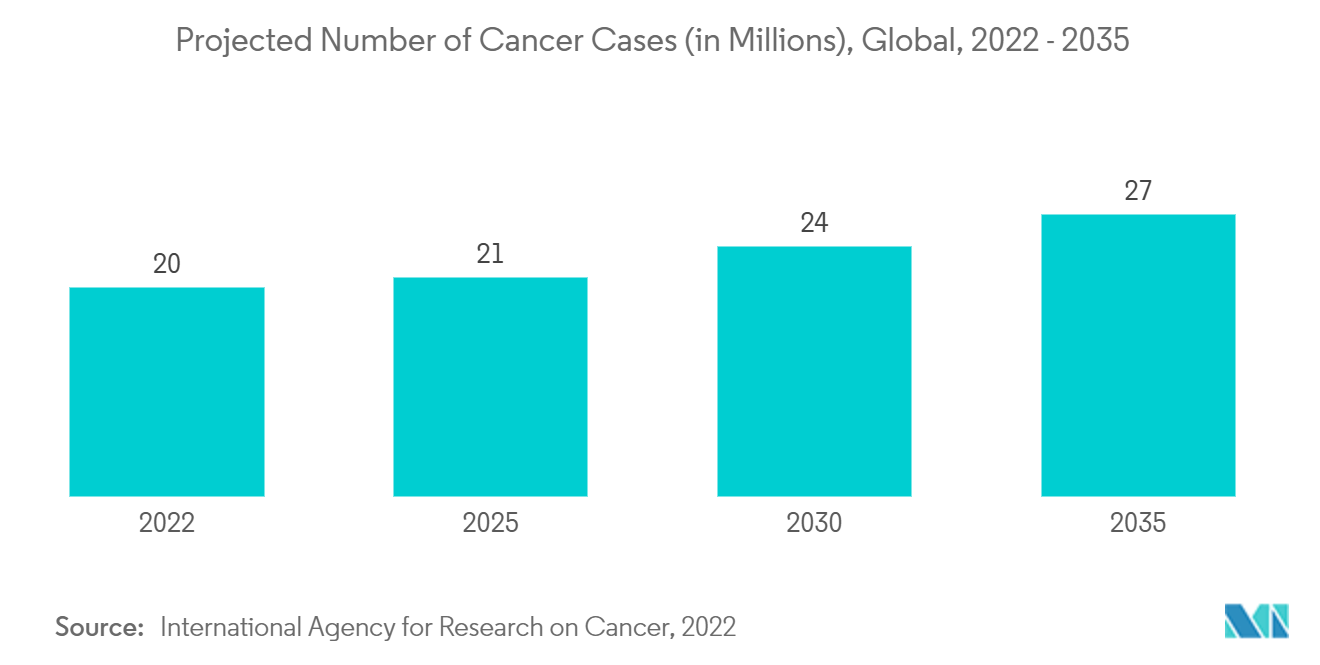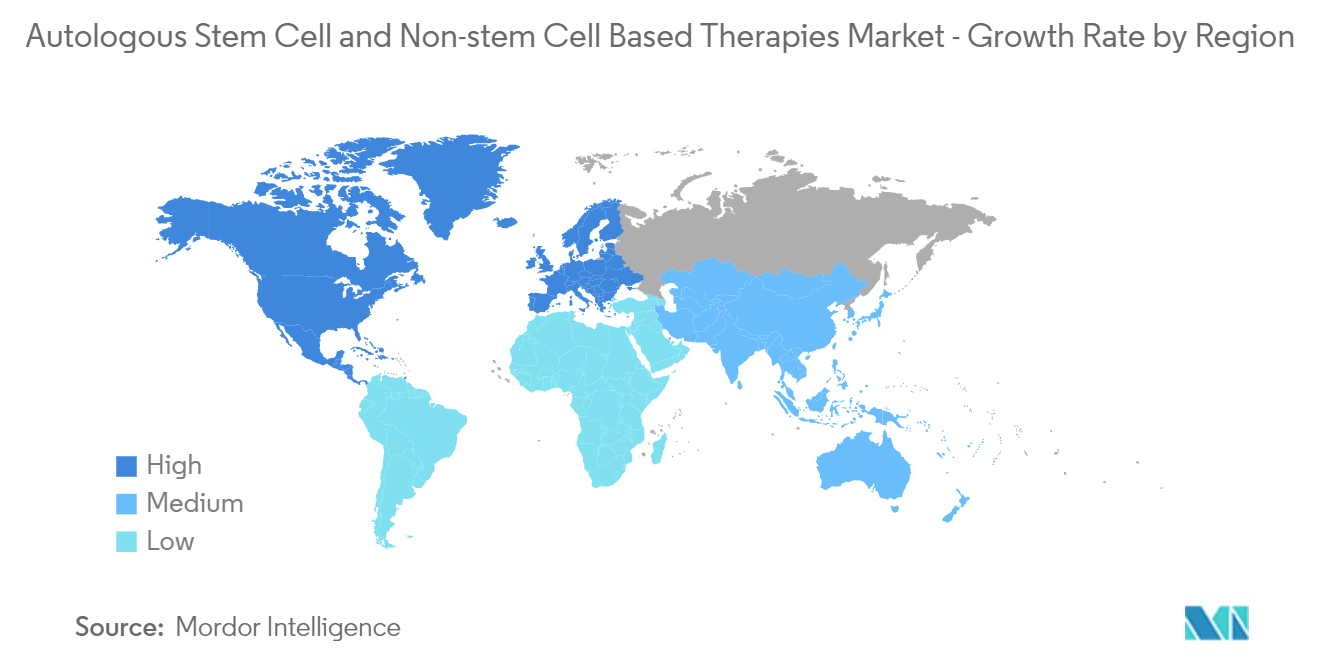Market Trends of Autologous Stem Cell And Non-Stem Cell Based Therapies Industry
The Cancer Segment is Expected to Hold a Significant Share in the Market
The cancer segment is anticipated to grow significantly in the autologous stem cell and non-stem cell-based therapies market during the forecast period. The growing burden of cancer, coupled with the practical applications of stem cell and non-stem cell-based therapies for cancer treatment and new product launches, are contributing to the growth of the cancer segment.
The rising burden of cancer across the world fuels the demand for effective autologous stem cell and non-stem cell-based therapies. Stem cells are used in cancer treatment because they can self-renew and replace the damaged cells caused by cancer. Thus, the significant use of stem cells to treat cancer is anticipated to contribute to the segment's growth. For instance, in January 2024, according to the American Cancer Society, the prevalence of cancer cases was around 1.9 million in 2023 and is anticipated to reach more than 2 million cancer cases in 2024 in the United States.
Additionally, in February 2024, according to the World Health Organization, about 35 million new cancer cases are expected to be diagnosed by 2050 globally, with an increase of 77% compared to 20 million cancer cases in 2022. Appropriate treatments using patient stem cells and public health action by governments and health practitioners may prevent as many as one-third of cancers worldwide. Hence, with the growing number of cancer patients, the demand for effective stem cell-based therapies is expected to increase, thereby boosting the segment's growth.
Additionally, several studies were conducted to demonstrate the efficacy of autologous stem cell and non-stem cell-based therapies for cancer treatment, thus maximizing the adoption of such therapies by cancer patients. For instance, in December 2023, a study conducted by the American Society of Clinical Oncology mentioned that around 27.8% of patients with large B-cell lymphoma (LBCL) treated with autologous stem cell transplant experienced second relapses compared to the 48% of patients who received CAR-T cell therapy. Thus, the effectiveness of autologous stem cell therapies and non-stem cell-based therapies is expected to be adopted for cancer treatments, driving the segment's growth.
Moreover, the key market players adopting various strategic initiatives to maximize product approvals further contribute to the segment's growth. For instance, in August 2023, Johnson & Johnson received approval from the United States Food and Drug Administration for Talvey (talquetamab-tgvs) for treating adult patients with relapsed or refractory multiple myeloma. Additionally, in February 2022, Johnson & Johnson announced the United States Food and Drug Administration approval for cell therapy Carvyktii (ciltacabtagene autoleucel; cilia-cel) for the treatment of patients with relapsed or refractory multiple myeloma.
Therefore, factors such as the increasing prevalence of cancer, rising clinical research studies, and new product approvals are anticipated to propel the segment's growth during the forecast period.

North America is Expected to Witness a Significant Growth in the Market
North America is anticipated to contribute a significant market share in autologous stem cell and non-stem cell-based therapies. Factors such as the increasing burden of chronic diseases and increasing clinical research programs are expected to boost the market's growth in the region during the forecast period.
The rising number of chronic diseases, such as cancer, diabetes, orthopedic disorders, and chronic kidney diseases, in North America fuels the demand for autologous stem cell and non-stem cell-based therapies, contributing to the market's growth. For instance, according to the data published by the Canadian Cancer Society in November 2023, around 239,100 Canadians were diagnosed with cancer during 2023, and 45% of the individuals in Canada are expected to be diagnosed with cancer in their lifetime.
Similarly, according to the data published by the Global Cancer Observatory (GLOBOCON) in February 2024, around 207 thousand cancer cases were diagnosed in Mexico in 2022 and are expected to reach 255 thousand by 2030. The high prevalence of cancer in the region indicates a sizeable potential demand for stem cell therapies in the market.
Moreover, in November 2023, the American Diabetes Association mentioned that every year, around 1.2 million new diabetic patients are diagnosed in the United States. Additionally, in May 2023, according to the Centers for Disease Control and Prevention, about 35.5 million adults in the United States were reported to have chronic kidney disease in 2023, representing 14% of the adults in the United States. With the rising burden of chronic diseases, the demand for autologous stem cell-based therapies is expected to increase owing to their high proliferation and differentiation capacities, paracrine activity, and immunologic privilege.
The recent programs for developing novel technologies based on autologous stem cell therapies are further expected to drive the market's growth in the region. For instance, in May 2023, University Health Network (UHN) research teams in Canada received USD 1.65 million in funding from the Stem Cell Network (SCN) to advance regenerative medicine therapies. This funding supports stem cell regenerative medical research and clinical trials across 24 projects and 14 disease areas.
Additionally, in August 2022, the National Institute of Health (NIH) reported that the surgical teams implanted a patch of tissue made from patient cells, i.e., autologous stem cell therapy, for the treatment of “dry” age-related macular degeneration (AMD).
Thus, the market studied is anticipated to grow in North America due to factors such as the growing burden of chronic diseases, research and development activities coupled with rising funding initiatives, and the adoption of autologous stem cell therapies in hospitals.


